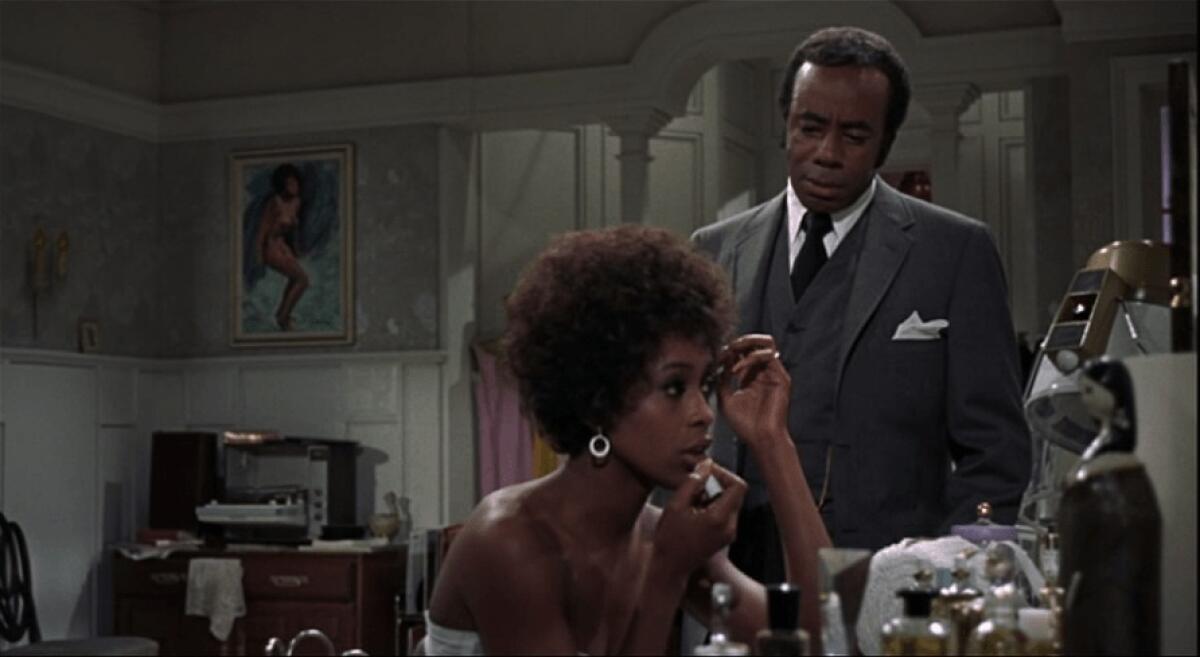Hello! I’m Mark Olsen. Welcome to another edition of your regular field guide to a world of Only Good Movies.
This year’s edition of the Cannes Film Festival launched this week. The winner of last year’s Palme d’Or, Sean Baker’s “Anora,” went on to win five Oscars including best picture. Numerous other Cannes premieres from 2024, such as “The Substance,” “The Apprentice” “Emilia Peréz” and “Flow,” went on to successful awards season runs as well.
This year’s lineup features many titles we could be talking about all year long, including Lynne Ramsay’s “Die, My Love,” Kelly Reichardt’s “The Mastermind,” Wes Anderson’s “The Phoenician Scheme,” Joachim Trier’s “Sentimental Value,” Ari Aster’s “Eddington,” Richard Linklater’s “Nouvelle Vague” and Spike Lee’s “Highest 2 Lowest.” The festival will world-premiere the feature directing debuts of Kristen Stewart and Scarlett Johansson, with “The Chronology of Water” and “Eleanor the Great” respectively. Read all of our coverage as it unfurls right here.
The festival also saw the premiere of Christopher McQuarrie’s “Mission: Impossible – The Final Reckoning,” the fourth movie he has made in Tom Cruise’s venerable action-espionage franchise. Amy Nicholson was at the film’s world premiere, writing, “Cruise is the reason audiences will, and should, see “Final Reckoning” on a large and loud screen. His Ethan continues to survive things he shouldn’t. … Yet, what I’ve most come to appreciate about Ethan is that he doesn’t try to play the unflappable hero. Clinging to the chassis of an airplane with the wind plastering his hair to his forehead and oscillating his gums like a bulldog in a convertible, he is, in fact, exceedingly flapped.”
‘Minority Report’ in 35mm
Samantha Morton and Tom Cruise star in the movie “Minority Report.”
(DreamWorks LLC / 20th Century Fox)
As audiences prepare themselves for the upcoming release of “Final Reckoning,” folks may want to revisit not only other films in the “Mission: Impossible” series but also other titles from the now nearly 45-year career of Tom Cruise.
On Sunday, the Egyptian Theatre will have a 35mm screening of 2002’s “Minority Report,” which paired the star with director Steven Spielberg for the first time. Adapted from a novella by sci-fi writer Philip K. Dick and set in 2054, the story finds Cruise as an officer for a “pre-crime” unit that uses clairvoyant humans to stop crimes before they occur. When he discovers possible faults in the system and finds himself accused of a crime he has yet to commit, Cruise must go on the run.
In a review at the time, Kenneth Turan wrote that the film “finds Hollywood’s preeminent director more convincingly at home with unapologetically bleak and unsettling material than he was with Kubrick’s ‘A.I.’ ‘I wanted to make the ugliest, dirtiest movie I have ever made,’ Spielberg told cinematographer Janusz Kaminski, and there’s little doubt he’s succeeded. … But the road to self-knowledge can be an uneven one, and as impressive as this disturbing, even haunting film can be, it does not feel all of a piece.”
Turan added, “A word must be said for Cruise. Though his is the starring role, it is in some ways a thankless one, needing him to be the tireless turbine that powers this expensive cinematic machine and nothing more. It’s not the kind of work that wins awards, but without Cruise’s intensity almost willing our interest in Spielberg’s unrelentingly dark world, ‘Minority Report’ wouldn’t have nearly as much life as it does.”
More ‘Old Man’ films from ‘You Must Remember This’

Jacqueline Bisset and Candice Bergen on set of the movie “Rich and Famous” in 1981.
(Michael Ochs Archives / Getty Images)
The American Cinematheque has a series underway to celebrate the recent season of the podcast “You Must Remember This.” A few months ago, I featured an interview with the show’s writer, producer and host Karina Longworth to talk about “The Old Man Is Still Alive,” a season examining the late careers of filmmakers such as Alfred Hitchcock, Vincent Minnelli, Billy Wilder and others who had enjoyed decades of success only to find themselves floundering amid the cultural changes happening in Hollywood during the 1960s and ’70s.
The Cinematheque series, playing Tuesdays throughout July at the Los Feliz 3, features some of the most intriguing titles from that podcast, many of them rarely screened and all worthy of the reappraisal Longworth invites. This Tuesday will be Howard Hawks’ 1965 film “Red Line 7000,” about young stock car racers.
In a published transcript from the episode covering Hawks, Longworth said the film was “a bizarre, low-budget experiment that grafts Hawks’s longstanding interest in gender warfare onto a semi-documentary sports movie about low-rent race car champions, starring a very young, very hot James Caan. Hawks’ ’60s romantic comedy, ‘Man’s Favorite Sport?’ could have been made in the 1930s and ’40s as basically the same movie. The same goes for each of the other films he made in his last decade as a filmmaker, none of which took place in contemporary America, except for ‘Red Line 7000.’ ‘Red Line 7000’ is a movie that could have only been made in 1965.”
Kevin Thomas reviewed the film on Nov. 26, 1965, writing, “‘Red Line 7000’ takes off like a streak of lightning, zooms through a thicket of romantic entanglements and winds up a winner at the finish. … Plenty of action plus a cast of attractive unknowns assures another success for veteran director Howard Hawks.”
That will be followed on May 27 by a 35mm screening of George Cukor’s 1981 “Rich and Famous,” starring Candice Bergen and Jacqueline Bisset as friends who become competitive over their literary careers. Noting Pauline Kael’s withering New Yorker review of the film, Longworth added, “What Kael sees as reason for derision, I see as worthy of praise.”
Thomas spent time on the set while the film was in production. Cukor told him, “It’s a great pleasure to read a really good script. And with such wit and style. It’s very contemporary and devastatingly accurate, with a bold, impertinent wit and gaiety. There are two extraordinary parts for women, and the man has a good one, too. So it’s up to us to make it work. I don’t think wit is the coin of the realm right now — it’s ‘Star Wars’ and all that.”
In an October 1981 profile of the film’s writer, Gerald Ayres, who also did Adrian Lyne’s 1980 “Foxes,” the writer says of Cukor, “He put bite and energy into it. His work survives so well because of that squeeze of lemon he puts in his films.”

James Coco and Dyan Cannon in the movie “Such Good Friends.”
(American Cinematheque)
On June 17, there will be a screening of Otto Preminger’s “Such Good Friends,” a satirical dramedy about middle-class sexual escapades starring Dyan Cannon (nominated for a Golden Globe for her performance) that featured a screenplay worked on by the likes of Joan Micklin Silver, John Gregory Dunne and Joan Didion with Elaine May receiving final screen credit under a pseudonym.
On the podcast, Longworth said of the film, “In the midst of a cultural moment that was obsessed with the idea of a sexual revolution but at the same time refused to acknowledge the ways in which that revolution mostly benefited men while imposing on women a whole new set of impossible standards, ‘Such Good Friends’ is the rare Hollywood movie of its time to portray the imbalance between men and women in terms of acceptable levels of desire and anger.”
A January 1972 Times profile of Preminger by Wayne Warga found the journalist tagging along to Preminger’s tastefully luxurious office on the Paramount lot (which the filmmaker would soon be losing), as well as to local TV appearances hosted by Tom Snyder and Regis Philbin. Cannon canceled a promotional tour for the film due to a dispute with Preminger and said for the record, “I have absolutely no words for him. I will come up with a word for him one day. It hasn’t been invented yet.”

Lola Falana and Roscoe Lee Browne in the 1970 movie “The Liberation of L.B. Jones.”
(American Cinematheque)
Other films in the series include Alfred Hitchcock’s 1972 “Frenzy,” Billy Wilder’s 1964 “Kiss Me, Stupid” in 35mm, Vincente Minnelli’s 1962 “Two Weeks in Another Town” in 35mm and Stanley Donen’s 1967 efforts “Two for the Road” and “Bedazzled.”
Among the most exciting titles in the series is a 35mm screening of William Wyler’s 1970 “The Liberation of L.B. Jones,” starring Roscoe Lee Browne, Lee J. Cobb, Anthony Zerbe and Lola Falana in a story of a successful Black businessman who finds his life complicated by his wife’s affair with a local white police officer.
Longworth called the film “uncompromising and unforgiving,” adding that, “‘The Liberation of L.B. Jones’ feels like Wyler leapfrogging over the ’60s entirely, skipping straight from a nostalgic cinematic universe in which nothing very bad ever happens to a ’70s of disillusionment and failed ideals.”
In a review from the time of the film’s release, Charles Champlin echoed those sentiments when he wrote the film was “unsentimental, unsparing, unforgiving, also brutal, credible, powerful, deeply disturbing and depressing and superbly well-acted. It reaffirms — not that it needed reaffirming — the immense power of the film as a social document. It will enrage as few pictures this year will enrage, and we’ll all have to hope that truth is its own purgative.”
Points of interest
‘Going Down’

A scene from the 1983 Australian film “Going Down.”
(Muscle Distribution)
The first theatrical re-release from the new company Muscle Distribution, 1983’s “Going Down” from Australian filmmaker Haydn Keenan will play in a 4K restoration on Friday and Saturday at Vidiots. The film has never had a U.S. release until now and is just the kind of off-beat, undiscovered title the current rep-revival scene is set up to embrace.
“Going Down” is similar to the early Susan Seidelman films “Smithereens” and “Desperately Seeking Susan” for the way it serves as a snapshot of a specific time and place — the clothes, the décor, the music — as well as being a portrait of a series of personalities. Capturing the early ’80s alternative scene of Sydney, the film follows four young women (played by Tracy Mann, Vera Plevnik, Julie Barry and Moira Maclaine-Cross) as they are all trying to establish their own identities and launch their lives, while also making their way across the city to find an envelope of missing money.
U.S. premiere of Chung Mong-hong’s ‘The Embers’

A scene from Taiwanese filmmaker Chung Mong-hong’s “The Embers.”
(American Cinematheque)
This weekend American Cinematheque is launching a series on the Taiwanese filmmaker Chung Mong-hong, including the U.S. premiere of his latest film “The Embers.” Aside from writing and directing all of the films in the series, Chung is also his own cinematographer. The filmmaker is scheduled to appear in person at all the shows.
Writing about him in 2022, critic Carlos Aguilar called Chung “one of the most infuriatingly underappreciated storytellers of our time.” This series should help bring his work to a broader audience.
“Parking,” from 2008, tells the story of a man trying to win back his estranged wife and is screening in 35mm. 2016’s “Godspeed” finds a cab driver mixed up with a drug dealer, while 2019’s family drama “A Sun” was Taiwan’s submission to the Academy Awards.
On Sunday, Chung will also introduce a 35mm screening of Jim Jarmusch’s 1984 “Stranger Than Paradise.”
Lars von Trier’s ‘Nymphomaniac’

Charlotte Gainsbourg and Jamie Bell in “Nymphomaniac: Volume II.”
(Christian Geisnaes / Magnolia Pictures)
On Wednesday, Brain Dead Studios will be screening both volumes of Lars von Trier’s “Nymphomaniac” combined as a single 242-minute experience. The films were released separately but both tell a continuing story, as Joe (Charlotte Gainsbourg) recounts to Seligman (Stellan Skarsgård) the story of her sexual awakening and ongoing struggles as a sex addict. The cast also includes Stacy Martin, Shia LeBeouf, Jamie Bell, Mia Goth, Willem Dafoe and Uma Thurman.
When the films were initially released in 2014, I reviewed both “Volume 1” and “Volume II” separately. As I said at the time, “Few other filmmakers are capable of quite the same walloping power, though the film’s digressive, chaptered style gives it an offhand quality that asks for easy dismissal. Von Trier is such a masterful filmmaker that every new project comes on with the expectation and air of a totalizing masterwork, [creating] the unsated sensation of having too much and wanting more.”
In another piece I wrote that considered the films within Von Trier’s larger body of work (noting the filmmaker’s turn toward pranksterish provocations such as his now-notorious Cannes news conference appearances), I added that with the “Nymphomaniac” films, “he further questions both himself and his audience, asking what we want from cinema and what cinema is capable of giving us back. … What the ‘Nymphomaniac’ project may represent most of all is Lars von Trier burning down his own house, clearing a path to get out of his own way. Provocative in every sense of the word, stirring the loins, the head and the heart, the cinema of Lars von Trier is not to be dismissed. And that’s no joke.”
In other news
Summer movie preview

Mia Threapleton and Benicio del Toro in director Wes Anderson’s “The Phoenician Scheme.”
(TPS Productions / Focus Features)
As part of our summer preview, the LAT published an interview wth Benicio del Toro, star of “The Phoenician Scheme.” Del Toro’s unpredictable screen presence has long made him one of my favorite actors and it is exciting to see him in a lead role. Wes Anderson wrote the part specifically for Del Toro, playing a 1950s industrialist tycoon known as Anatole “Zsa-zsa” Korda.
As Del Toro said to Carlos Aguilar, the actor couldn’t quite believe what he was reading in the script pages Anderson would periodically send him. “I didn’t know if it was going to be another film like ‘The French Dispatch,’ where my character ends and then another story rolls up,” he said. “Little by little, I understood that it was the whole thing.”

Allison Williams and an animatronic M3GAN in a scene from the movie “M3GAN 2.0,” directed by Gerard Johnstone.
(Universal Pictures)
Joshua Rothkopf spoke to Adrien Morot and Kathy Tse, the creative team behind Morot FX Studio, who along with several puppeteers, technicians and 15-year-old actor Amie Donald bring the film’s unnerving robot doll to life in the upcoming “M3GAN 2.0.” (Morot and Tse also won an Oscar for their work on “The Whale.”) The doll for the new film has been altered somewhat to keep up with Donald’s own growth.
“In my naiveté, I never quite understood just how much this was basically an elevated Muppet movie,” said the film’s director Gerard Johnstone. He added, “I thought, Why are we making something that looks like a toy when these guys can make things that look human? Wouldn’t that be really fun if we went further into the uncanny valley than we’ve ever gone before? And Adrien and Kathy were the perfect people to partner up with on that.”
There is also a handy list of 18 films to look forward to this summer, including Celine Song’s “Materialists,” Eva Victor’s “Sorry, Baby,” Darren Aronofsky’s “Caught Stealing,” Danny Boyle’s “28 Years Later,” James Gunn’s “Superman,” Zach Cregger’s “Weapons,” Joseph Kosinski’s “F1,” Akiva Schaffer’s “The Naked Gun,” Michael Shanks’ “Together” and Nisha Ganatra’s “Freakier Friday.”





